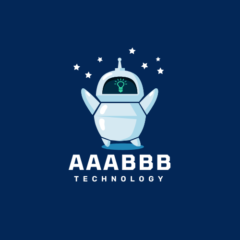Augmented reality (AR) has revolutionized how we interact with products, offering immersive experiences that blend digital elements with real-world environments. AR product design combines creativity, technology, and user-centric approaches to deliver innovative solutions. This guide explores the key aspects of augmented reality product design, providing insights into tools, strategies, and future trends.
Understanding Augmented Reality Product Design
What is Augmented Reality Product Design?
Augmented reality product design involves creating digital overlays that enhance users’ interaction with physical products. By integrating AR technology, designers can provide real-time information, interactive features, and engaging visuals. This approach transforms traditional products into dynamic, user-focused experiences.
Core Principles of AR Product Design
- User-Centricity: Prioritize the end-user’s needs and preferences.
- Seamless Integration: Ensure AR elements blend naturally with the physical environment.
- Performance Optimization: Focus on speed, stability, and compatibility across devices.
Tools and Technologies for AR Product Design
Key AR Development Platforms
- Unity 3D: A versatile platform for creating AR applications (https://unity.com/).
- ARKit: Apple’s framework for building AR experiences on iOS devices (https://developer.apple.com/arkit/).
- Vuforia Engine: A robust toolset for designing and deploying AR solutions (https://www.vuforia.com/).
Essential Design Tools
- Figma: For prototyping AR interfaces (https://www.figma.com/).
- Blender: A 3D modeling software for creating AR assets (https://blender.org/).
- After Effects: For designing animations and visual effects in AR.
Optimizing User Experience in AR Product Design
Key Considerations for UX Design
- Intuitive Navigation: Ensure users can interact with AR elements effortlessly.
- Contextual Relevance: Provide information that is timely and location-specific.
- Accessibility: Make AR experiences inclusive for users of all abilities.
Best Practices for AR UX
- Test prototypes in real-world environments to identify usability issues.
- Use clear visual cues to guide user interaction.
- Optimize for low-latency performance to avoid disorientation.
Challenges and Opportunities in AR Product Design
Common Challenges
- Hardware Limitations: Variability in device capabilities can affect AR experiences.
- Content Creation Complexity: Developing high-quality AR content requires specialized skills.
- User Adoption Barriers: Educating users about AR benefits is crucial for widespread adoption.
Future Opportunities
- Integration of AI to enhance personalization and interactivity.
- Expansion into industries like education, healthcare, and retail.
- Development of cross-platform AR solutions for broader accessibility.
Case Studies: Successful AR Product Designs
Example 1: IKEA Place App
IKEA’s AR app allows users to visualize furniture in their homes before purchasing (https://www.ikea.com/us/en/mobile/). This approach reduces returns and enhances customer satisfaction.
Example 2: Porsche AR Showroom
Porsche uses AR to provide immersive car configurations, enabling customers to explore features virtually (https://www.porsche.com/arshowroom/).
Frequently Asked Questions
Q1: What skills are needed for AR product design?
– Proficiency in AR development platforms.
– Knowledge of 3D modeling and animation tools.
– Strong understanding of UX principles.
Q2: How can businesses implement AR in their products?
Start with small-scale projects, invest in training, and collaborate with AR experts to ensure success.
Key Takeaways for the Future
- Personalization: AI-driven AR will enable tailored experiences.
- Interactivity: Enhanced user interaction through advanced AR features.
- Ubiquity: AR adoption across industries will continue to grow.
Conclusion
Augmented reality product design is a transformative field with immense potential. By leveraging cutting-edge tools and focusing on user-centric approaches, designers can create innovative solutions that redefine how we interact with products. As technology evolves, the opportunities for AR in product design will only expand, making it an essential area of investment for businesses.

Leave a Reply